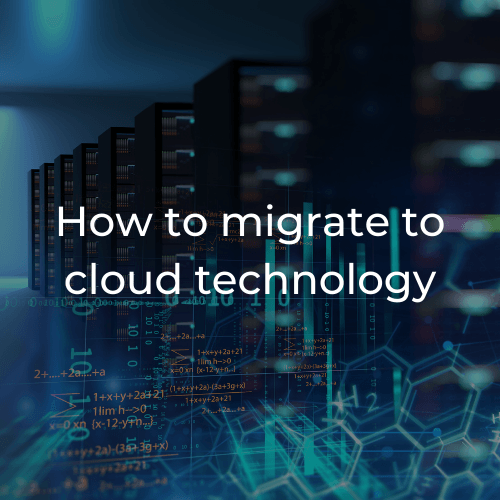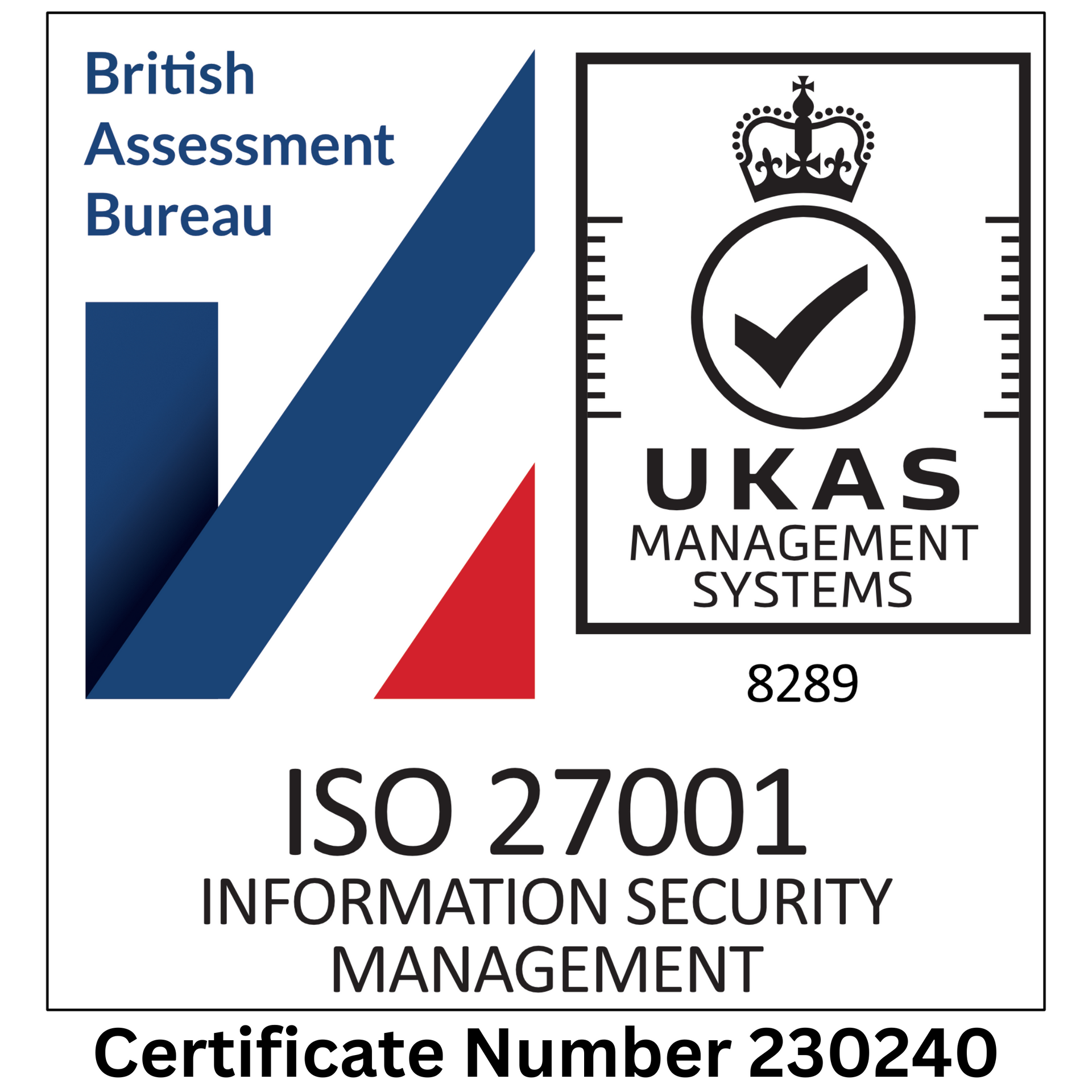What we'll cover in this article...
In this article we're going to dive deep into what cloud migration is and what it means for you. Skip ahead or click the links below.
Let's start with the basics #Cloud101
The cloud is everywhere. As you’re probably aware, cloud technologies have become the default platform for most new IT services. We’ll cover the benefits in more detail later, but suffice to say it offers users a better, more flexible, scalable and secure way to run their IT systems.
But what about those older applications and systems that pre-date the cloud? This is where cloud migration comes in.
Cloud migration is the process of moving applications and systems from traditional data centres and server rooms into the cloud. Many organisations want to do more with the cloud. In fact, the UK is the third biggest investor in cloud computing (Some £10 billion).
Terminology busting
There are many IT terms that can be associated with cloud migration. Perhaps you’ve heard of some of these?
- Digital transformation
- Cloud adoption
- IT modernisation
- Cloudification
- Rearchitect
- Data centre modernisation
- Rehost
- Digitalisation
Why would a business want to move to the cloud? Scroll down to learn more...
Why would you want to migrate to the cloud?
Cost savings
One of the more common reasons why organisations migrate to the cloud is to reduce IT infrastructure costs. In the cloud, IT managers can easily adapt computing resources according to their unique business requirements and cut wasteful spending.
Rather than estimate capacity needs in advance, organisations can adjust on the fly, as well as eliminate unnecessary hardware or rigid on-premises assets like a clunky old server room.
Increase business agility
Having access to flexible, on-demand IT resources is crucial for keeping pace with competitors and rapidly changing industry dynamics. In the cloud, over 99% of what you need is available on-demand.
Organisations won't have to wait weeks or months for hardware components and installations. Instead, they can lease valuable capabilities directly from cloud providers and get to market much more quickly.
Improved security
By migrating to the cloud, organizations can modernize IT infrastructure according to best practices and protect their applications from malicious hacking attempts.
The cloud empowers groups to implement the security policies, governance, and compliance guardrails they need for their particular operations. To learn more about cyber security click here.
Eliminate 'end of life' concerns
For many organisations, the decision to migrate is influenced by end-of-life timelines for critical hardware and software. IT leaders today don’t want to deal with rigid licensing agreements and long-term contracts anymore.
Businesses can access the latest and greatest technologies immediately without having to sign any inflexible, long-term contracts.
Leverage new technologies
Migrating to the cloud opens up numerous doors of opportunity when it comes to leveraging modern technologies. For example, organisations that migrate can take advantage of machine learning and AI, which aren’t feasible on-premises.
Accelerate growth
Technology is more important than ever when it comes to business growth, whether it be through organic expansion or mergers and acquisitions.
Businesses in the cloud can integrate new acquisitions to existing platforms more easily. They can also scale rapidly with demand using auto-scaling functionality and flexible data management services.
How do you migrate to the cloud?
Before moving forward with any cloud migration, you'll need to get clarity across these key areas.
- Is your business prepared to operate in the cloud?
- If not, what do you need to do to get ready?
- What is your business case for adopting the cloud?
- What are the financial implications of moving IT infrastructure to the cloud?
Once you’ve got the answers to these questions, it’s time to give one of our IT specialists a call. Yoozoom is devoted to making digital transformation happen for all UK enterprises. We believe that cloud transformation is a fundamental enabler for the adoption of digital technologies such as AI, IoT and automation that will increase the productivity of your business.
Continue reading to learn the key steps in making a successful transition to the cloud.
The steps to a successful cloud migration
1. It's all in the preparation, preparation, preparation!
Before you migrate your company's data to the cloud, making sure you're fully prepared to do so is crucial. Inadequate preparation before cloud migration could result in several things, including unforeseen consequences and inefficient solutions. Remember - a bad apple spoils the whole barrel. The main aspects of pre and post cloud migration you should consider are:
Accessibility
How to ensure the cloud is accessible for your staff following migration.
"I don't need a hard disk in my computer if I can get to the server faster... carrying around these non-connected computers is byzantine by comparison."
- Steve Jobs -
Without giving all of these points sizeable consideration, you run the risk of a faulty migration that leads to problems further down the line. And nobody wants that.
The steps to a successful cloud migration
2. Define what cloud migration success means for your company
Defining success
As mentioned previously, a successful cloud migration looks different for every company, depending on unique needs and the size of the business. When it comes to determining what cloud migration success will look like, consider it as another set of key performance indicators (KPIs). For the majority of SMEs, successful migration to the cloud looks like...
- Lower ongoing maintenance costs than prior to migration
- Heightened accessibility for all users, including employees
- Smoother running and faster loading times
- Better scalability as and when your company requires it
- Lower deployment and configuration of data components
Of course, some of these goals you may prioritise more than others - that's to be expected! No two businesses are the same, so it makes sense that no two sets of goals would be the same. Oh, if only, though...
The steps to a successful cloud migration
3. Research and choose your cloud service provider
Research, research, research!
Once you know what you intend to get out of migration to the cloud and the resources you endeavour to migrate over, it's time to start researching the many providers of cloud storage solutions.
There is no single better cloud provider than the others; it all boils down to what a provider can offer you and whether that aligns with your company's predetermined needs and wants. See - we told you the previous points were important.
When researching cloud providers, it's critical that you remember there are three main types of cloud models available: Private, Public, and Hybrid.
• Private: This offers a secure location to keep your servers and storage devices. They usually have various failovers for power and connectivity and are considered an improvement to on site hardware. Although you will have full control of your hardware, you will also be responsible for updates, failures and the costs of keeping them up to date.
• Public: A public cloud model like Azure or AWS takes away the responsibility for hardware and system patching. By using a service like SharePoint, you no longer have to worry about servers, patching or availability, it’s all taken care of in the background.
• Hybrid: As the name suggests, hybrid cloud models make use of components from both private on site and public cloud models, usually synching files or emails between the two solutions. This is usually a stepping stone when moving a large organisation to a fully public cloud solution.
The steps to a successful cloud migration
4. Establish your cloud migration strategy (and run with it!)
The 6 R's
There are many different strategies that you could choose when migrating your data to the cloud. Below are summaries of the most popular cloud migration strategies for SMEs, collectively known as the six R's.
• Replatform: The transfer of applications to the cloud in order to modernise.
• Retain: Applications cannot be migrated to the cloud due to limited capabilities.
• Rehost: Just replicate the data on your servers on a cloud server.
• Retire: Eliminate apps that you don't need anymore.
• Refactor: Reconsider some of your application's code to try and make it more effective on the cloud.
• Repurchase:
Look at subscription services rather than one-off purchasing software models.
The steps to a successful cloud migration
5. All systems go, it's time to migrate!
Ready for launch
Congratulations - you've reached the point of no return. It's time to migrate your company's data to the cloud. Dramatics aside, it's at this stage that you move all data and any users over to cloud-based platforms, usually with the help of your chosen cloud provider.
Trust Yoozoom for your cloud migration and storage needs
Whether your company requires professional assistance for cloud telephone services, VoIP management, or other IT managed services, Yoozoom should be your port of call. Our friendly and knowledgeable IT experts are on hand to help with a range of technical matters and, thanks to operating across the UK, we can help you out wherever you are.
Sign up to our mailing list today or get in touch with us to stay up to date with the latest and greatest Yoozoom news..
Contact Yoozoom today
As the UK’s leading specialist provider of business cloud systems, we’re here to provide high-quality and reliable managed IT services such as cloud migration and VoIP management for call centres and businesses.
So, book a meeting with our friendly team here at Yoozoom and join our mailing list to explore your options on migrating to the cloud.
We will get back to you as soon as possible.
Please try again later.
*We may contact you to let you know about what’s going on at Yoozoom. This can be anything from the latest product innovations to exclusive deals and future events. Remember, you can always opt out later.

Get instant access to our knowledge hub.
Sign up* to access our exclusive cloud transformation guides. You'll learn:
- How to transition to The Cloud
- How to increase productivity with technology
- How to increase sales from your website
- Industry news to give you an edge
- And so much more!
*We may contact you to let you know about what’s going on at Yoozoom. This can be anything from the latest product innovations to exclusive deals and future events. Remember, you can always opt out later.
We will get back to you as soon as possible.
Please try again later.
Contact Us
Yoozoom
Unit 8
Gemini Business Park
Sheepscar Way
Leeds
LS7 3JB
Contact Us
Yoozoom
Unit 8
Gemini Business Park
Sheepscar Way
Leeds
LS7 3JB
Company Number: 07618108
VAT Number: GB11304662
Yoozoom Technologies Limited T/A Yoozoom















